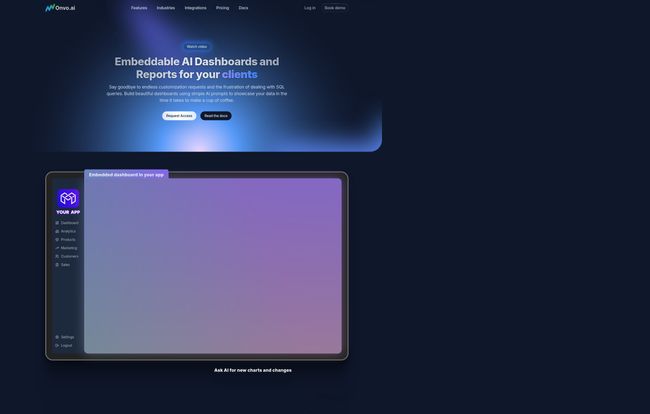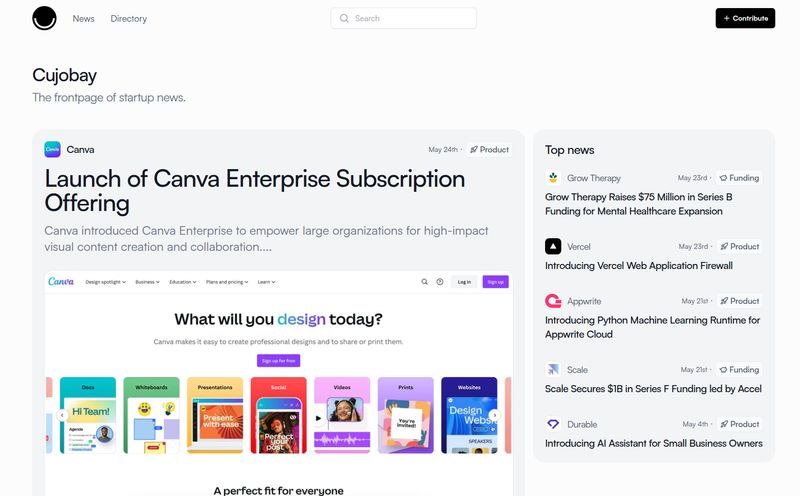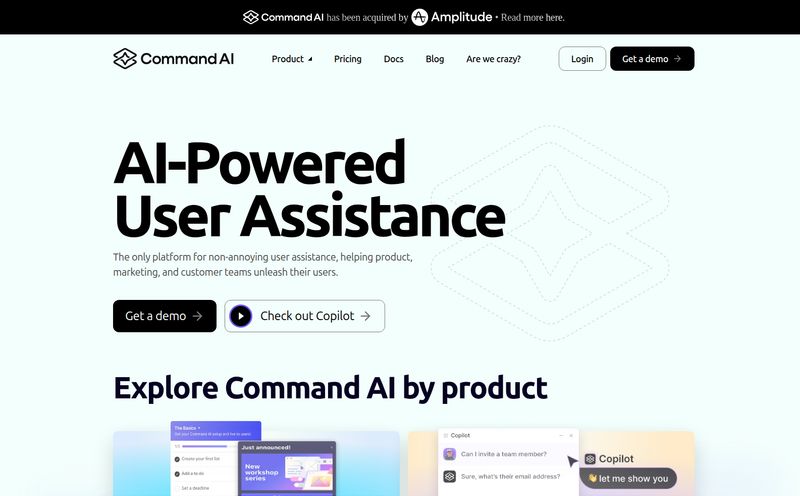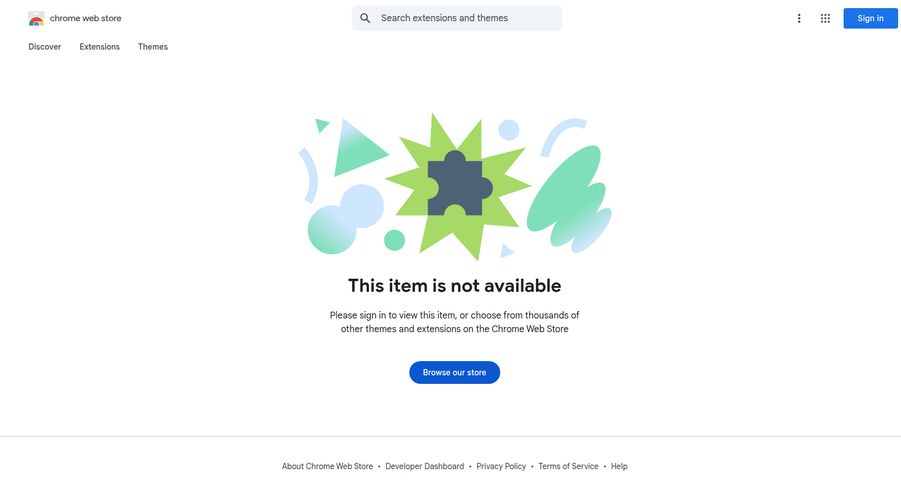If you've ever been on a product team for a SaaS app, you know the moment. That inevitable point in the roadmap meeting where someone says, “We need better in-app analytics for our users.” And everyone collectively groans. Not because it’s a bad idea—it’s a great idea!—but because building, scaling, and maintaining beautiful, functional, customer-facing dashboards is an absolute resource vampire.
I’ve been there. I remember a project a few years back where we spent, and I am not exaggerating, nearly a quarter of our development budget on a custom analytics module. It was buggy, slow, and by the time we launched it, our users’ needs had already changed. It was a painful lesson in reinventing the wheel.
So when a tool like Onvo.ai comes across my desk, I’m immediately intrigued. But I'm also skeptical. The market is full of platforms promising to be the “easy button” for data. Onvo’s pitch is centered around embeddable AI dashboards. It’s not just about visualizing data, it's about making that visualization a native, intelligent part of your own product, fast. But does it live up to the hype? Let’s find out.
What Exactly is Onvo.ai? (And Why Should You Care?)
Okay, let's clear something up right away. Onvo.ai isn't another Tableau or Power BI clone designed for your internal marketing team to track campaign metrics. You don't log into Onvo to look at your own stats. Instead, Onvo is a platform for developers and product managers to build and embed dashboards directly into their own applications for their customers to use.
Think of it like this: You wouldn't build your own payment processing system from scratch, right? You'd use Stripe or Braintree. You wouldn't build your own CRM, you'd integrate with HubSpot. Onvo.ai wants to be the “Stripe for customer-facing dashboards.” It provides the infrastructure, the tools, and the slick AI-powered interface so you can focus on your core product instead of getting bogged down in chart libraries and database queries.
This is a huge deal for any SaaS company that handles user data. Whether you’re a fintech app showing spending habits, a healthcare portal displaying patient outcomes, or a project management tool visualizing team productivity, offering powerful analytics is no longer a “nice to have.” It’s a requirement. Onvo is betting you'd rather buy than build. And honestly, they're probably right.
The Core Features That Caught My Eye
A shiny landing page is one thing, but the feature set is where the rubber meets the road. I poked around their site and documentation, and a few things really stood out as solutions to problems I've personally faced.
The AI-Powered "Magic Wand"
This is Onvo's headline act. The platform includes a natural language query feature. The idea is that an end-user (or a developer during setup) can literally just type, “Show me sales trends for Q3 by region” and the system generates the chart. This is the kind of stuff that sounded like science fiction five years ago, but with the explosion of LLMs, it’s becoming reality.

Visit Guidenco & Onvo AI
Now, is it a perfect, all-knowing oracle? I doubt it. The quality of AI-generated insights is always going to be heavily dependent on the quality and structure of your underlying data. Garbage in, garbage out, as they say. But as a way to lower the barrier to entry for data exploration and allow non-technical users to self-serve? It's a fantastic concept and a major differentiator from older, more rigid embedded BI tools.
Embeddability That Doesn't Feel... Tacked On
I’ve seen my fair share of “embedded” analytics that are just clumsy iframes with a bunch of branding you can’t remove. It screams “we bolted this on” and cheapens the user experience. Onvo seems to understand this pain point. They highlight their API and SDK, Single Sign-On (SSO) capabilities, and granular user management.
This means you can make the dashboards look and feel like a native part of your application. Your user logs into your app, with your authentication, and sees a dashboard that has your branding, and only shows the data they’re supposed to see. That’s not just embedding; that's proper integration.
Connecting Your Data Shouldn't Require a PhD
Another classic bottleneck is just getting your data into the visualization tool. Onvo promotes a “plug and play” approach with standard integrations for common sources like SQL databases, data warehouses, and even other APIs. The goal is to get you from raw data to a live dashboard with minimal fuss. For teams without a dedicated data engineer on standby, this simplification is a godsend.
Let's Talk Money: Onvo.ai Pricing Breakdown
Alright, the part everyone scrolls down for. How much does this magic cost? The pricing model is pretty straightforward for a B2B SaaS tool, which I appreciate. No hidden fees or confusing credit systems, just clear tiers.
| Plan | Price | Best For |
|---|---|---|
| Startup | $169 / month | Early-stage companies or those testing the waters with embedded dashboards for a single use case. It gives you the core platform without the more advanced bells and whistles. |
| Growth | $424 / month | Growing companies that need more automations, custom LLM capabilities, and a higher volume of users and dashboards. This feels like teh standard plan for most established SaaS businesses. |
| Enterprise | Custom Pricing | Large-scale operations that need self-hosting options, unlimited everything, and dedicated support. You'll have to book a demo and talk to sales for this one. |
Note: Pricing is based on information available at the time of writing. Always check their official pricing page for the most current details.
The Good, The Bad, and The... Complicated
No tool is perfect. In my experience, it's all about trade-offs. Here’s my honest take on where Onvo shines and what you should think about before signing up.
The Good stuff is pretty obvious. The number one benefit is speed. The potential to launch a sophisticated, AI-enhanced analytics feature in weeks instead of months (or years) is a massive competitive advantage. The focus on the customer-facing experience is also a big plus. And I have to admit, the AI assistant, even if it has limitations, is a genuinely cool feature that can seriously improve user engagement.
Now for the things to consider. First, you're looking at vendor lock-in. Once you build your analytics experience around Onvo, migrating away would be a significant undertaking. That’s the nature of using any specialized third-party service, but you need to go in with your eyes open. Second, while the AI is a great assistant, it's not a replacement for a human who understands data. You can't just point it at a messy database and expect miracles. Your team still needs to own the data strategy. Lastly, that jump from the Growth plan to a custom Enterprise plan can sometimes be a bit of a chasm for mid-size companies, it's a bridge you'll have to cross eventually if you scale significantly.
Who is Onvo.ai Actually For?
After digging in, the ideal customer profile seems pretty clear to me.
- Early-stage SaaS startups who need to deliver a data-rich experience to their users to prove value and attract investment, but don't have the engineering headcount to build it from scratch.
- Established companies who are tired of maintaining a clunky, homegrown analytics module and want to replace it with something more modern, powerful, and AI-driven.
- Product Managers who want to empower their users with self-service reporting without drowning their dev team in endless feature requests for new charts and filters.
Who is it not for? If you're just looking for an internal business intelligence tool for your own team, this is probably overkill. The core strength of Onvo.ai is its ability to be seamlessly and securely embedded into a product that your own customers use.
Frequently Asked Questions about Onvo.ai
Can I customize the look of the dashboards?
Yes, absolutely. The platform is designed to be white-labeled, allowing you to match the dashboards to your app's branding, colors, and overall design for a native look and feel.
How does the AI part actually work?
It uses natural language processing (NLP). You or your users can type questions in plain English, like “What were our top 10 products last month?” The AI interprets the question, queries the connected data source, and generates an appropriate visualization. It's designed to make data exploration more intuitive.
Is Onvo.ai secure for sensitive data?
It appears to be built with security in mind. Features like SSO and granular user permissions mean you control who sees what data. For specific compliance questions (like HIPAA or GDPR), you’d definitely want to talk to their team, especially on the Enterprise plan.
Can I embed Onvo dashboards into any application?
According to their site, you can embed dashboards into your web applications, mobile apps, internal tools, or customer portals. The use of an API and SDK gives you a lot of flexibility here.
Is there a free trial?
The site doesn't list a traditional free trial. The typical path seems to be either starting with the paid "Startup" plan to try out the platform in a real-world scenario or booking a demo with their team to get a guided tour, which is common for B2B developer tools.
How does Onvo.ai compare to Tableau or Power BI?
It's a different tool for a different job. Tableau and Power BI are primarily standalone BI platforms for internal analysis. Onvo.ai is an embedded analytics platform designed to be a part of your product, for your customers. Its main competitors are tools like Looker Embedded or ThoughtSpot Everywhere.
My Final Verdict on Onvo.ai
So, is Onvo.ai the magic bullet for all your data visualization woes? Of course not. No tool is. But it is a very, very compelling solution to a very common and expensive problem.
The shift from building every feature in-house to integrating best-in-class specialized services is one of the biggest trends in software development. Onvo.ai fits perfectly into that philosophy. It's a smart, modern, and AI-forward platform that seems to genuinely understand the needs of SaaS businesses.
If you’re on the verge of building or overhauling a customer-facing analytics feature, I think you owe it to your team (and your budget) to give Onvo.ai a serious look. It might just save you a world of headaches and let you get back to building the thing that only you can build: the core of your product.



